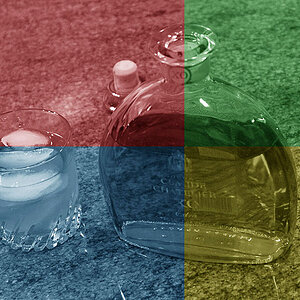Navigation
Install the app
How to install the app on iOS
Follow along with the video below to see how to install our site as a web app on your home screen.

Note: This feature currently requires accessing the site using the built-in Safari browser.
More options
You are using an out of date browser. It may not display this or other websites correctly.
You should upgrade or use an alternative browser.
You should upgrade or use an alternative browser.
Composition - do I have the right idea?
- Thread starter Kathleen
- Start date
Txaggie08
TPF Noob!
- Joined
- Mar 14, 2007
- Messages
- 150
- Reaction score
- 0
- Can others edit my Photos
- Photos NOT OK to edit
The only thing I would critique on the above photo is were you cnetered the focus. I would prefer the trees closer to the center of the photo to be in harder focus for a greater DOF
gmarquez
TPF Noob!
- Joined
- Mar 24, 2007
- Messages
- 486
- Reaction score
- 1
- Location
- Arroyo Grande, CA
- Can others edit my Photos
- Photos OK to edit
Thanks!
"One does not compose a photograph"
I disagree a little. To compose a photograph, you might reframe it, or crop it, or circle around the subject to "arrange" the elements in the photo in a pleasing way. I would consider doing this arranging 3 dimensional elements onto your 2 dimensional representation of the world.
However, I fear I'm straying too far into the academics of composition here, instead of the practical aspects (tools for making good pictures great).
My final thoughts on the subject are to learn a few of the compositional tools ('rule' of thirds, symetry, etc.), then go out and shoot with them in mind. Shoot a lot. Keep the rules that help your photos, discard those that don't. Develope your own "rules" (techniques) as well. Look at others' photos you like, and figure out what you like about them. Shoot some more. Soon you will internalize your own 'rules' and style, and it will become second nature. And the style will most likely evolve throughout your life.
How do you know when you've taken a "great" picture? Print your photo up as an 8"x10" print, or view it so that it takes up the height or width of your monitor. Look at, but don't concentrate on it. If your first thought is, "wow, that is a really cool picture!", then you probably have a great picture. If your first thought is "hey, that's kind of nice", then you have a "nice" picture. Not all pictures will be great, nor should we expect them to be. However, the ones that are both "great" AND have special emotional attachment for us (a candid shot of a child, for example) are truely special.
"One does not compose a photograph"
I disagree a little. To compose a photograph, you might reframe it, or crop it, or circle around the subject to "arrange" the elements in the photo in a pleasing way. I would consider doing this arranging 3 dimensional elements onto your 2 dimensional representation of the world.
However, I fear I'm straying too far into the academics of composition here, instead of the practical aspects (tools for making good pictures great).
My final thoughts on the subject are to learn a few of the compositional tools ('rule' of thirds, symetry, etc.), then go out and shoot with them in mind. Shoot a lot. Keep the rules that help your photos, discard those that don't. Develope your own "rules" (techniques) as well. Look at others' photos you like, and figure out what you like about them. Shoot some more. Soon you will internalize your own 'rules' and style, and it will become second nature. And the style will most likely evolve throughout your life.
How do you know when you've taken a "great" picture? Print your photo up as an 8"x10" print, or view it so that it takes up the height or width of your monitor. Look at, but don't concentrate on it. If your first thought is, "wow, that is a really cool picture!", then you probably have a great picture. If your first thought is "hey, that's kind of nice", then you have a "nice" picture. Not all pictures will be great, nor should we expect them to be. However, the ones that are both "great" AND have special emotional attachment for us (a candid shot of a child, for example) are truely special.
PetersCreek
TPF Noob!
- Joined
- Aug 5, 2005
- Messages
- 239
- Reaction score
- 4
Considering context, I don't think our use of the term "composition" is at all improper. Since most of us don't likely use just one dictionary, or just one definition for most words, I think we've got more than enough leeway to justify it's use. For instance, one dictionary defines composition as "the plan, placement, or arrangement of the elements of art in a work."
Artistic photography most certainly can involve the physical arrangement of the subject(s). Take fine art still life photography, for instance. But even if we don't lay a finger on the scene, we can still plan, place, or arrange the elements in our photos by choosing our POV, focal length, depth of field, cropping, etc. Doing so allows us to affect the observed relationship between elements. Me, I'm gonna call that composition.
Artistic photography most certainly can involve the physical arrangement of the subject(s). Take fine art still life photography, for instance. But even if we don't lay a finger on the scene, we can still plan, place, or arrange the elements in our photos by choosing our POV, focal length, depth of field, cropping, etc. Doing so allows us to affect the observed relationship between elements. Me, I'm gonna call that composition.
By panning your camera or changing the DOF, this is not a compositional move, you have merely subtracted from the picture, you have not physically dug up that lamp post, you excluded by panning, etc; it is a choice by seeing photographically and that should happen intuitively, something completely different than the commonly defined composition.
Yes, we can physically "arrange" things in a studio, but it is the choice of the space within that picture that matters, and that is decided by our vision and ability to see photographically. Not from following rules or breaking rules, or cropping or "arranging." Without the ability to see the picture space, and that seeing is usually intuitive, you don't have anything.
Take a photograph you think is great by one of your favorite photographers. What is the difference in "composition" between their photograph and a similar heartfelt one made by someone who photographed the same thing, but who made a boring picture? It is not the thing. That is in both pictures. For the sake of arguement, let's assume both the photographer who made the boring photograph and the photographer who made the great photograph put the same amount of feeling into making that photograph, and that their technical skill was equal. So with feeling and technical being equal, what is the difference? It is not the subject, nor the amount of emotion that went into it, nor the technical stuff. It is the way the space was seen.
Yes, we can physically "arrange" things in a studio, but it is the choice of the space within that picture that matters, and that is decided by our vision and ability to see photographically. Not from following rules or breaking rules, or cropping or "arranging." Without the ability to see the picture space, and that seeing is usually intuitive, you don't have anything.
Take a photograph you think is great by one of your favorite photographers. What is the difference in "composition" between their photograph and a similar heartfelt one made by someone who photographed the same thing, but who made a boring picture? It is not the thing. That is in both pictures. For the sake of arguement, let's assume both the photographer who made the boring photograph and the photographer who made the great photograph put the same amount of feeling into making that photograph, and that their technical skill was equal. So with feeling and technical being equal, what is the difference? It is not the subject, nor the amount of emotion that went into it, nor the technical stuff. It is the way the space was seen.
PetersCreek
TPF Noob!
- Joined
- Aug 5, 2005
- Messages
- 239
- Reaction score
- 4
Point taken.
gmarquez
TPF Noob!
- Joined
- Mar 24, 2007
- Messages
- 486
- Reaction score
- 1
- Location
- Arroyo Grande, CA
- Can others edit my Photos
- Photos OK to edit
Just a thought, PetersCreek and JC1220, I don't think you guys are going to see eye to eye on this one, and the distinction probably isn't all that important to Kathleen's original question anyways...so maybe agree to disagree?
- Joined
- Feb 1, 2004
- Messages
- 34,813
- Reaction score
- 822
- Location
- Lower Saxony, Germany
- Can others edit my Photos
- Photos NOT OK to edit
Thanks for that, G  .
.
ksmattfish
Now 100% DC - not as cool as I once was, but still
- Joined
- Aug 25, 2003
- Messages
- 7,019
- Reaction score
- 36
- Location
- Lawrence, KS
- Website
- www.henrypeach.com
- Can others edit my Photos
- Photos NOT OK to edit
Here's a link to a list of web articles on photographic composition.
http://photoinf.com/
Don't limit yourself to just photographic sources though, composition is basically the same for all the 2D visual arts. Take a Design class at your local college, or at least pick up the text book. Frequent art galleries and museums, and study the composition in the works you view.
In the end there is no right or wrong composition, just composition that might be more effective for certain purposes. Learn "the rules", see how others have applied them (and whether it worked or not), listen to advice (check your sources), but in the end you have to follow your own vision.
You might also be interested in reading up on previsualization. Just google "previsualization photography", and I'm sure a bunch of articles will pop up.
http://photoinf.com/
Don't limit yourself to just photographic sources though, composition is basically the same for all the 2D visual arts. Take a Design class at your local college, or at least pick up the text book. Frequent art galleries and museums, and study the composition in the works you view.
In the end there is no right or wrong composition, just composition that might be more effective for certain purposes. Learn "the rules", see how others have applied them (and whether it worked or not), listen to advice (check your sources), but in the end you have to follow your own vision.
You might also be interested in reading up on previsualization. Just google "previsualization photography", and I'm sure a bunch of articles will pop up.
Thanks G, my explainations of how I approach photography are not to entirely disagree or agree, it is an exploration of how others work, to help educate, and point someone in another direction other than the norm in some cases. I believe what PetersCreek and I were discussing is very much related to the orginal question of the "concept of composition."
Some believe it is something that can be learned, others do not. Some believe it should/can be taught, others do not.
Kathleen I hope our additions to your post were helpful, as that was my primary goal.
Some believe it is something that can be learned, others do not. Some believe it should/can be taught, others do not.
Kathleen I hope our additions to your post were helpful, as that was my primary goal.
Similar threads
- Replies
- 20
- Views
- 2K
- Replies
- 7
- Views
- 1K

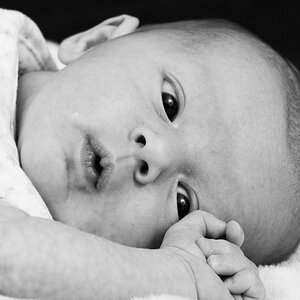
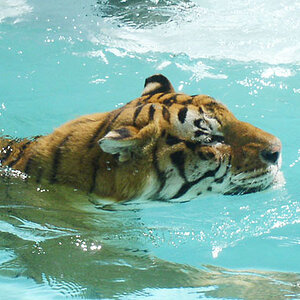

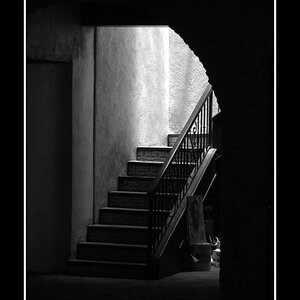
![[No title]](/data/xfmg/thumbnail/42/42460-80970c44cc9fb42dd0c86d08e7bc401d.jpg?1619740191)
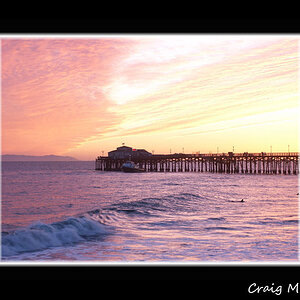
![[No title]](/data/xfmg/thumbnail/31/31752-fcbc5aa4a94154b9c273592aa37b8b1e.jpg?1619734991)
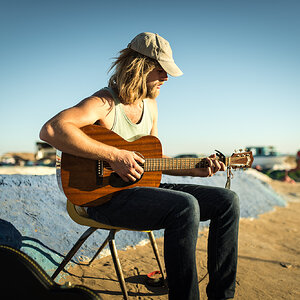

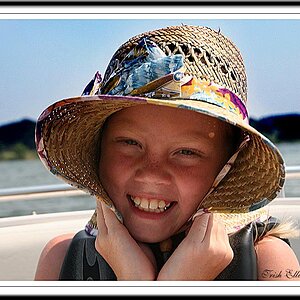
![[No title]](/data/xfmg/thumbnail/42/42461-e2a94a39b9483a804af86010fc52244b.jpg?1619740192)
